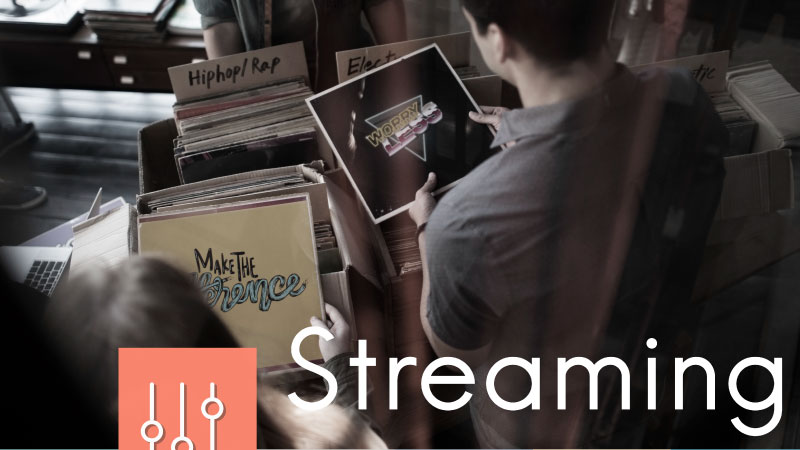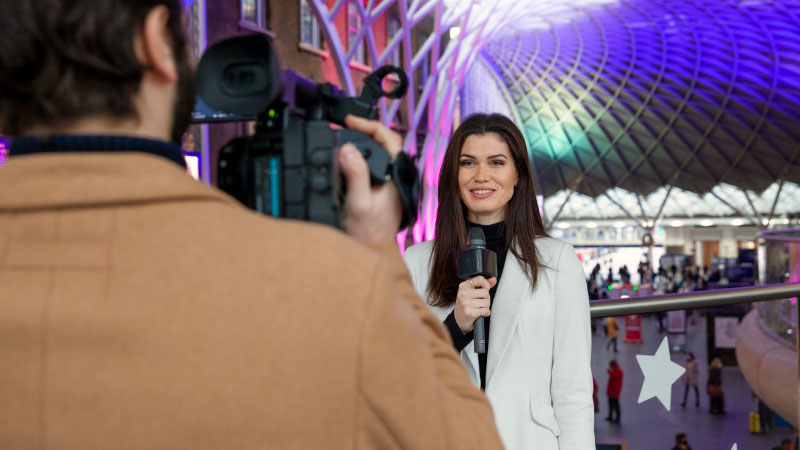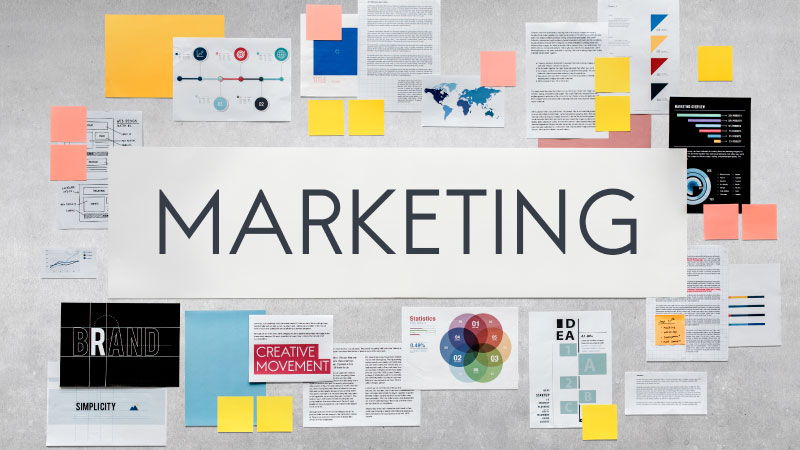In recent years, the events industry has gone through a profound transformation, accelerated by technology, changing audience expectations, and the global shift toward hybrid and sustainable solutions. These trends have impacted everything from event design and marketing to attendee engagement and operational logistics. Staying ahead of these emerging trends is essential for event organizers, exhibitors, and planners who want to create memorable, impactful experiences. Here’s a look at some of the most significant trends shaping the future of events.

1. Hybrid and Virtual Event Innovations
The move toward hybrid and virtual events has been one of the industry’s most transformative shifts, giving rise to new event formats that blend online and in-person experiences seamlessly. This approach has allowed events to expand their reach to a global audience, reduce travel costs, and increase flexibility for attendees.
Key Features of Hybrid and Virtual Events:
- Virtual Networking Spaces: Sophisticated online platforms are now simulating in-person networking with features like “virtual lounges,” AI-driven match-making, and personalized meeting rooms.
- Augmented Reality (AR) and Virtual Reality (VR): AR and VR are being used to create immersive experiences in virtual event spaces, from virtual venue tours to interactive 3D product showcases.
- On-Demand Content: Many event platforms offer recorded sessions that attendees can access anytime, extending the value of the event beyond its live dates.
2. Focus on Sustainability
Sustainability has become a core value in event planning, as attendees, sponsors, and organizers increasingly prioritize eco-conscious practices. Today’s events are designed to minimize waste, energy consumption, and carbon footprints, setting a new standard for the industry.
Sustainable Practices in Event Planning:
- Digital Registration and Ticketing: Paperless solutions are now the norm, reducing waste from printed materials.
- Eco-Friendly Venues: Many events are moving to LEED-certified or carbon-neutral venues that adhere to eco-friendly standards.
- Waste Reduction Strategies: Events are incorporating biodegradable materials, sustainable food sourcing, and recycling stations to minimize environmental impact.
- Carbon Offset Programs: Event organizers can offer attendees options to offset their travel or reduce their overall event-related carbon footprint through partnerships with green organizations.
3. Personalization and Data-Driven Experiences
Today’s attendees expect a high level of personalization in their event experiences, from the pre-event communication to the on-site interactions. Data collection has become an invaluable tool, allowing organizers to customize content, networking opportunities, and even catering options based on attendee preferences.
Ways Data is Shaping Personalized Event Experiences:
- Customized Content: By tracking attendee interests, organizers can create sessions that align with their preferences and backgrounds.
- Real-Time Feedback Loops: Through apps and live polling, event teams can capture immediate feedback and adjust on the fly, whether it’s updating session topics or adjusting room temperatures.
- Enhanced Networking: AI-based algorithms can suggest connections, schedule meetings, and create networking opportunities tailored to each attendee’s professional interests and goals.

4. Experiential and Immersive Design
Events today are about creating memorable, engaging experiences rather than just presenting content. Experiential design emphasizes the senses, transforming the traditional event into an immersive experience.
Noteworthy Experiential Design Elements:
- Interactive Displays and Demos: Attendees can engage directly with products, services, or interactive booths, making them part of the experience rather than passive observers.
- Pop-Up Installations: Unique, themed spaces within an event allow brands to showcase their offerings creatively.
- Multisensory Environments: Lighting, soundscapes, scents, and touchpoints are used to create unique atmospheres, deepening the connection between the attendee and the event’s message.
5. AI-Driven Event Planning and Execution
Artificial intelligence (AI) is transforming the back-end processes of event planning and execution, streamlining everything from registration to post-event analysis. By automating repetitive tasks, AI can improve efficiency and accuracy, freeing up human resources for more complex responsibilities.
AI Applications in Events:
- Smart Registration and Check-In: Facial recognition and automated check-ins reduce wait times and improve the attendee experience from the start.
- Chatbots for Attendee Support: Chatbots can answer questions, provide event schedules, and even suggest sessions based on attendee profiles.
- Data Analytics and Insights: AI-driven analytics tools can evaluate attendee engagement, measure the success of specific sessions, and assess overall satisfaction, providing organizers with valuable insights for future events.
6. Health and Wellness Integration
Health and wellness are becoming increasingly important for event attendees, and event organizers are responding by integrating wellness activities, nutritious food options, and flexible schedules into their programs.
Health-Focused Features in Modern Events:
- Wellness Lounges and Quiet Zones: Many events now offer designated areas where attendees can relax, meditate, or recharge away from the crowd.
- Mindful Nutrition: With a growing focus on health, catering options often include nutritious, locally sourced foods and accommodate dietary restrictions.
- On-Site Wellness Activities: Yoga classes, guided meditation, and fitness breaks have become popular options, promoting physical and mental well-being for attendees.

7. Enhanced Networking Technology
Networking is a critical element of any event, and technology is revolutionizing the way connections are made. Advanced networking platforms can help attendees find the most relevant people to meet, set up meetings, and even follow up post-event.
Innovative Networking Solutions:
- AI Matchmaking: AI-powered platforms can analyze attendee profiles to recommend connections, increasing the chances of meaningful interactions.
- Scheduled Meeting Spaces: Dedicated networking areas with semi-private spaces make it easy for attendees to meet up, discuss business, and establish connections without distractions.
- Digital Business Card Exchanges: QR codes and apps that allow for instant business card exchanges are replacing traditional paper cards, providing a more sustainable and efficient way to share contact details.
8. Gamification and Engagement
Gamification is becoming a popular tool for enhancing attendee engagement, creating a more interactive experience and rewarding participation.
Examples of Event Gamification:
- Points-Based Systems: Attendees earn points for activities like attending sessions, visiting booths, or participating in Q&As, redeemable for rewards or prizes.
- Event-Wide Challenges: Scavenger hunts, digital passport stamps, or virtual bingo keep attendees engaged and exploring throughout the event.
- Leaderboards and Prizes: Leaderboards encourage friendly competition, while prizes incentivize active participation and engagement.
9. Community Building and Year-Round Engagement
A significant trend in events today is creating a sense of community that extends beyond the event itself. Organizers are increasingly focused on building lasting relationships with their attendees, maintaining engagement year-round, and transforming events from one-off experiences into ongoing communities.
Strategies for Community Building:
- Exclusive Member Groups: Private groups or forums allow attendees to continue conversations, share insights, and maintain connections made at the event.
- Content Hubs: Some events provide access to a content hub where attendees can access session recordings, articles, and other resources after the event.
- Ongoing Virtual Events: Hosting smaller, virtual events between major conferences keeps the audience engaged and connected throughout the year.
10. Mobile Integration for Seamless Experiences
Mobile apps are now essential tools for modern events, providing attendees with quick access to schedules, networking tools, and other event details at their fingertips. Attendees can access schedules, session locations, networking tools, and live updates with a few taps.
Key Features of Mobile Event Apps:
- Real-Time Updates: Instant notifications keep attendees informed about schedule changes, speaker announcements, or upcoming sessions.
- In-App Networking Tools: Messaging, chat features, and attendee directories make it easy to connect and stay in touch post-event.
- Personalized Agendas: Attendees can customize their schedules, saving sessions, speaker details, and notes within the app.

These emerging trends represent a transformative shift in the way events are planned, executed, and experienced. As technology continues to advance and audience expectations evolve, the future of events will likely see even more exciting innovations. Event professionals who adapt to these changes and stay informed about emerging trends will be well-equipped to create memorable, impactful, and sustainable events that meet the needs of today’s attendees.
Whether you’re an organizer, planner, or attendee, understanding these trends will ensure that your events are not only current but also engaging, sustainable, and forward-thinking. By embracing these new approaches, the events industry can continue to provide valuable experiences that make a lasting impact.



